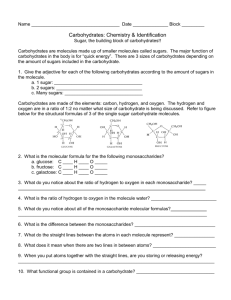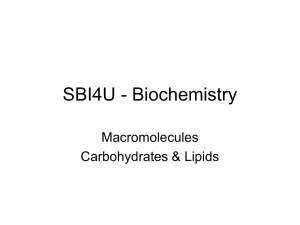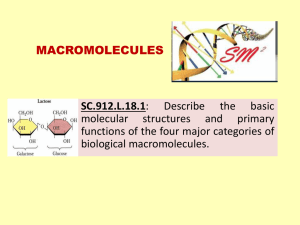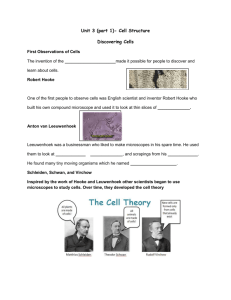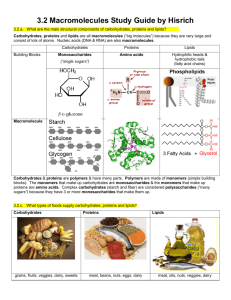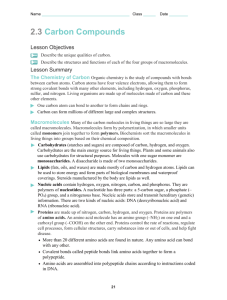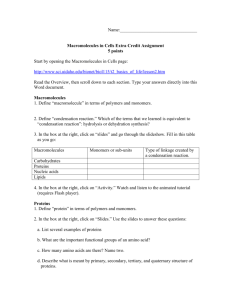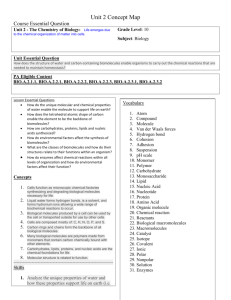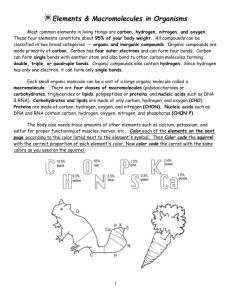2. What are macromolecules?
advertisement
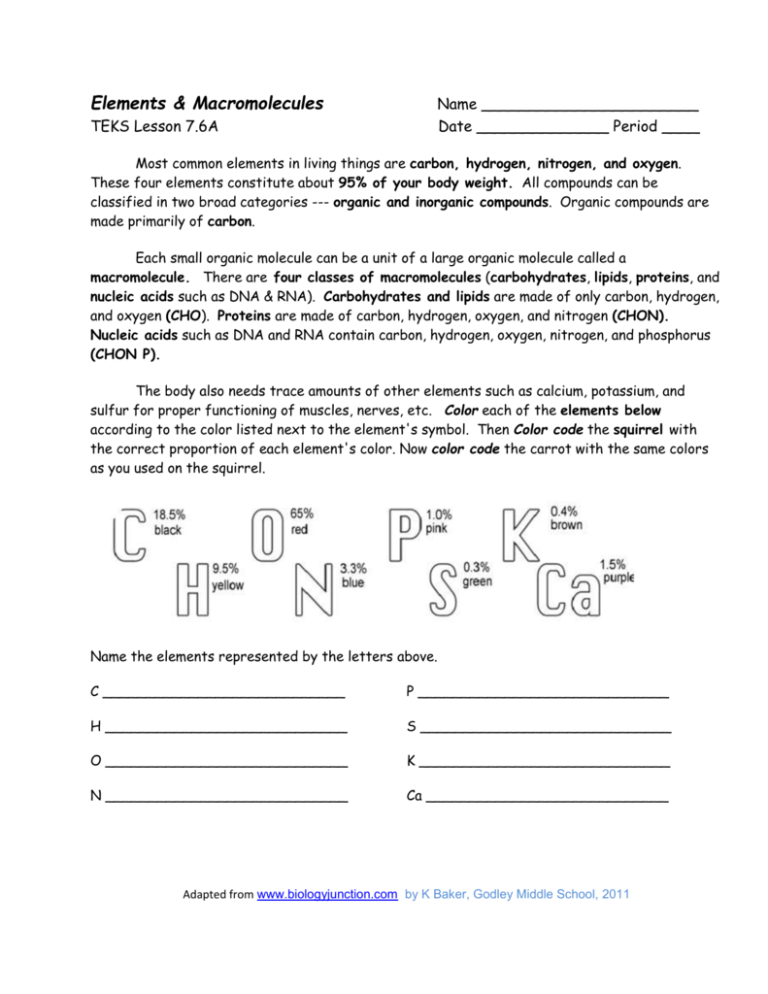
Elements & Macromolecules TEKS Lesson 7.6A Name _______________________ Date ______________ Period ____ Most common elements in living things are carbon, hydrogen, nitrogen, and oxygen. These four elements constitute about 95% of your body weight. All compounds can be classified in two broad categories --- organic and inorganic compounds. Organic compounds are made primarily of carbon. Each small organic molecule can be a unit of a large organic molecule called a macromolecule. There are four classes of macromolecules (carbohydrates, lipids, proteins, and nucleic acids such as DNA & RNA). Carbohydrates and lipids are made of only carbon, hydrogen, and oxygen (CHO). Proteins are made of carbon, hydrogen, oxygen, and nitrogen (CHON). Nucleic acids such as DNA and RNA contain carbon, hydrogen, oxygen, nitrogen, and phosphorus (CHON P). The body also needs trace amounts of other elements such as calcium, potassium, and sulfur for proper functioning of muscles, nerves, etc. Color each of the elements below according to the color listed next to the element's symbol. Then Color code the squirrel with the correct proportion of each element's color. Now color code the carrot with the same colors as you used on the squirrel. Name the elements represented by the letters above. C ____________________________ P _____________________________ H ____________________________ S _____________________________ O ____________________________ K _____________________________ N ____________________________ Ca ____________________________ Adapted from www.biologyjunction.com by K Baker, Godley Middle School, 2011 Questions: 1. Name the 4 main elements that make up 95% of an organism. 2. What are macromolecules? 3. Name the 4 classes of macromolecules. 4. Give 2 examples of nucleic acids. Adapted from www.biologyjunction.com by K Baker, Godley Middle School, 2011 6. What elements make up carbohydrates & lipids (name & symbol)? 7. Name 3 elements your body needs trace amounts of for proper functioning. The four main classes of organic compounds (carbohydrates, lipids, proteins, and nucleic acids) that are essential to the proper functioning of all living things are known as macromolecules. All of these compounds are built primarily of carbon, hydrogen, and oxygen but in different ratios. This gives each compound different properties. Carbohydrates are used by the body for energy and structural support in cell walls of plants and exoskeletons of insects and crustaceans. They are made of smaller subunits called monosaccharides. Monosaccharides have carbon, hydrogen, and oxygen in a 1:2:1 ratio. Monosaccharides are simple sugars that include glucose, galactose, and fructose. Although their chemical formulas are the same, they have different structural formulas. These simple sugars combine to make disaccharides (double sugars like sucrose) and polysaccharides (long chains like cellulose, chitin, and glycogen). Use the diagram of glucose to tell how many carbons, hydrogens, and oxygens are in a single molecule. #C __________ # H __________ # O __________ Adapted from www.biologyjunction.com by K Baker, Godley Middle School, 2011 Questions: 8. Macromolecules are also known as _____________. 9. If all the macromolecules are made mainly of the elements CHO, how are they different? 10. Name 2 ways your body uses carbohydrates. 11. What are the subunits called that make up carbohydrates? 12. What is the ratio of C, H, and O in monosaccharides? 13. Name 3 monosaccharides. 14. Monosaccharides are ___________ sugars. 15. What are disaccharides & give an example? 16. Long chains of sugars are ______________. Name three. Adapted from www.biologyjunction.com by K Baker, Godley Middle School, 2011
